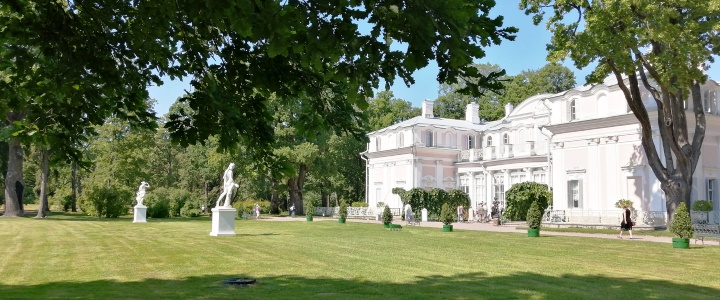From 1756 to 1762, the architect Antonio Rinaldi built the Peterstadt Fortress ensemble on the bank of the Karost River for Grand Duke Peter Fedorovitch. In 1762 Empress Catherine II ordered the construction of the suburb residence called "My Own Countryside House". For that purpose Rinaldi built the Chinese Palace (1762–1768), a mix of Baroque architecture, Classicism and Chinese motifs, the Katalnaya Gorka (roller coaster) Pavilion (1762–1774), a cupola pavilion, and the Gates of Honor with the tower crowned by a spire.
Chinese Palace in Oranienbaum
From the outside, the Chinese palace is a relatively simple building, single-storey except for the small central pavilion, painted in a mellow combination of ochre and yellow. The seventeen rooms inside, decorated by Rinaldi and other leading artists and craftsmen of the day, feature pink, blue and green scagliola, painted silks, and intricate stucco work. Rinaldi's parquet floors are wonderfully ornate, using several types of rare Russian and imported wood. Among the highlights of the Chinese Palace interiors are the Glass Beaded Salon, the walls of which are hung with 12 panels of richly coloured tapestries depicting exotic birds and fauna. The fine white glass beads that form the backdrop of the tapestries give the whole room a diaphanous, shimmering quality that was designed to be particularly effective in the glowing twighlight of the White Nights. The full influence of Chinoiserie is in evidence in the Large Chinese Salon, where the walls are covered with marquetry paneling of wood and walrus ivory depicting oriental landscapes, and large Chinese lanterns hanging in the corners. The room also contains an English-made billiard table with superb wood carving.
The Upper Park was laid out from 1750 to 1770.
